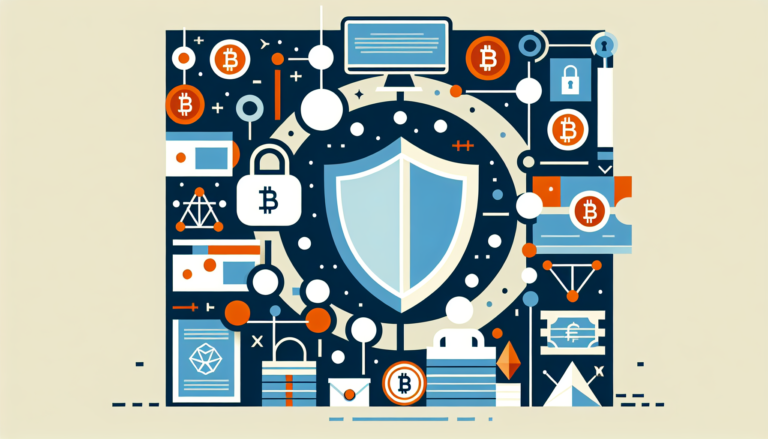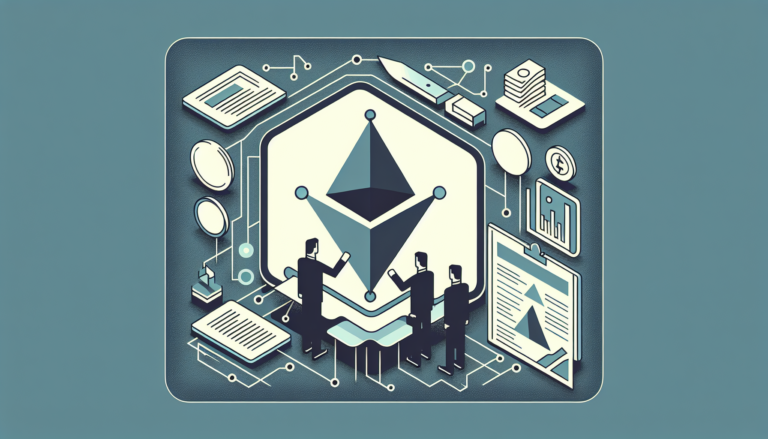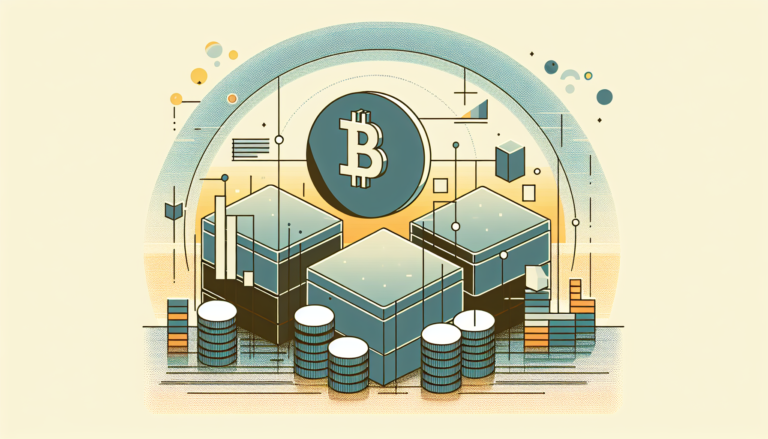Navigating DeFi: Essential Risk Management Strategies Revealed
Understanding DeFi Risk
So, I’ve wandered into the wild west of decentralized finance, or as us cool kids call it, DeFi. If you want to keep your money safe and sound in this digital financial playground, understanding DeFi risks is key. You gotta know what can go wrong before you dive in so your cash doesn’t vanish faster than ice cream on a hot day.
Introduction to DeFi Risks
DeFi is all about cutting out the middleman. Think of stuff like payments, lending, trading, and insurance happening on platforms where you don’t need banks breathing down your neck. It’s like a financial buffet—tantalizing but tricky. But without banks, these platforms come with their own share of curveballs that you need to be ready for.
Enter smart contracts, the magic scripts of the blockchain world. They’re like the digital version of a vending machine: put in your code, and out comes your transaction, no questions asked. No annoying middleman to deal with, just pure code magic (Delta Capita).
Significance of DeFi Risk Assessment
Now, let’s talk about why playing detective in DeFi is essential. It’s like checking under the bed and in the closet for monsters before you go to sleep. You need to sniff out any financial trouble lurking in the dark. DeFi risk breaks down into three main flavors: financial risk, procedural mishaps, and technical whoopsies (101 Blockchains).
-
Financial Risk: This one’s all about your wallet and your financial comfort zone. It’s the ‘know what you’re getting into’ kind of a deal. If you’re allergic to risk, you wanna know how this affects your potential payoff before making a move.
-
Procedural Risk: Basically, don’t be that person who writes passwords on sticky notes. It’s about using DeFi options smartly and keeping a lock on your digital doors. Knowing what you’re doing can save you from giving hackers an open invitation to your funds.
-
Technical Risk: Think glitches and bugs. These are the tech gremlins hiding in the code. Regular check-ups and a good antivirus are your best friends in keeping these critters at bay.
As DeFi grows, so do the risks. But, if you keep your eyes peeled and gather your tools, you can steer through DeFi waters like a pro. Get your strategy cap on, be paranoid but smart, and you’ll be navigating the DeFi seas with the same confidence as a pirate with an X-marks-the-spot map!
Types of DeFi Risks
You’re diving into the wild world of decentralized finance, huh? Well, let me break down the risks waiting for you. Buckle up, because we have financial risk, procedural risk, and technical risk ready to meet you.
Financial Risk
Financial risk—think of this as the rollercoaster of investments. You gotta know how much risk you can handle before jumping into DeFi platforms because they have their own kind of beastly challenges. It’s all about the wiggly lines on charts, right? The volatility of assets, liquidity hiccups, and market mood swings can make or break your plans. So, take a good look at those before making any moves in the DeFi jungle.
Procedural Risk
Move over technical gurus, here comes procedural risk. It’s all about how you—or anyone else—uses DeFi stuff. You know those annoying phishing emails your uncle keeps falling for? Well, that’s one part of procedural risk. We’re talking social engineering tricks that can mess with platform security. From sketchy emails to pretexting or even sneaky SIM-swapping, you gotta keep your eyes open. Educate yourself a little bit and you’ll be better at keeping your goodies safe from virtual pickpockets.
Technical Risk
Now onto the nerdy stuff—technical risk. It’s what happens when your fancy DeFi tools go a bit wonky. We’re talking hardware and software bloopers. Those smart contracts everyone keeps buzzing about? Yeah, some of them have quirks that can cause trouble like front-running or math bugs. Then there’s hardware—if it’s allergic to certain power supplies or software updates, you’re in for a bumpy ride, my friend. These issues can mess with how smoothly things run and their staying power.
Understanding how financial, procedural, and technical risks mix together in DeFi is like finding the last piece of a puzzle. If you’re keeping your eyes peeled and your brain ticking, with a dash of DeFi platform risk analysis and some clever strategies in your toolkit, you’re ready to step into the DeFi ring with some extra pep in your step.
Managing Financial Risk in DeFi
When you’re dealing with the wild, unpredictable jungle of decentralized finance, keeping a keen eye on financial risk is like wearing armor before a battle. Understanding and applying smart tactics can help you dodge the hazards lurking in DeFi. We’re going to chat about two ways to keep your financial neck safe: overcollateralized loans and keeping tabs on regulations.
Overcollateralizing Loans
In the DeFi world, particularly when you’re talking about lending, the idea of overcollateralization is a big deal. Unlike your run-of-the-mill bank loans where trust and credit score are the currency, DeFi lending likes to play it different. Here, you’re playing a peer-to-peer game, matching borrowers with lenders through algorithms. Borrowers need to put up more collateral than the loan’s worth, kind of like leaving your watch as a deposit for a nice dinner, except you get the watch back. This way, if someone decides to do a vanishing act, the lender isn’t left empty-handed. It’s a safety net that keeps everyone happy and the wheels turning smoothly.
Regulatory Framework Awareness
As DeFi keeps changing faster than a chameleon, it’s important to stay sharp on what’s happening with rules and laws in our DeFi playground. Because DeFi plays outside the traditional banking sandbox, it sometimes doesn’t fit neatly into existing rules. You’ve gotta keep up with what’s happening legally while making deals from your digital devices. Knowing the rules of the game keeps you from unknowingly stepping on regulatory landmines. Keeping one ear to the ground about any changes and chatting with regulators if need be, makes sure you’re in the clear. That way, you’re always playing it smart and secure.
Handling financial risk in DeFi isn’t just about crossing fingers and hoping for the best. You need a plan—think ahead, know the risks, keep up with what’s what in regulations. By getting your ducks in a row when it comes to risk management, you can protect your stash, make sure everything’s on the level, and even help DeFi grow and thrive for the long haul.
Mitigating Procedural Risks
Let’s chat about how folks can skirt around the tricky bits in DeFi—yeah, that’s right, decentralized finance isn’t all sunshine and roses. The biggest thing is making sure everyone stays safe and sound while playing the DeFi game. Here’s how we keep the cyber boogeymen at bay.
User Security Education
Before you leap off into the DeFi ocean, it’s smart to know your swim strokes—or in this case, your security basics. A big one is keeping those all-important private keys under lock and key (not literally, but you get it). If you’re out there not knowing how to spot a sneaky phishing scam, you might as well be leaving the door wide open for trouble.
DeFi spots should be like your favorite coffee shop, a place to grab info on security without feeling like you just skipped homework. Imagine clear guides, expert tips, and simple ways to check if that link is more scam than legit. A sprinkle of this know-how can mean fewer woes down the road.
Phishing Attack Prevention
Phishing scams are the party crashers in the DeFi universe. They trick folks with fake smiles, only to snatch away passwords and private keys. The trick? Keep them out with a solid dose of smarty-pants precautions.
Enter multi-factor authentication (MFA)—it’s all about asking for a little more proof before you log in. Even if someone gets their grubby hands on your password, it won’t do them any good without the extra verification step.
Keeping folks in the loop with frequent security updates and heads-ups about possible scam attempts can turn them into sharp-eyed detectives. The more you know, the less you fall for these tricks. With everyone playing their part, the DeFi gang can lock arms against phishing scammers and step up the safety game.
By making sure users have the security savvy and locking out cyber threats with smart prevention measures, DeFi platforms can smooth out the procedural bumps. Not only does it safeguard coins and crucial details, but it also builds the kind of trust that makes the DeFi space shine.
Addressing Technical Risks
When you’re playing in the DeFi sandbox, you gotta keep those technical risks in check. Without doing so, you might as well open the doors wide to mischief-makers. So, let’s chat about keeping things secure and tidy — we’re talking smart contract hiccups and those pesky hardware issues that could trip up your fancy decentralized playground.
Smart Contract Vulnerabilities
Now, about those smart contracts. They run on their own, free from any middleman referee. But that doesn’t mean they can’t get tangled up in their own logic. There’s stuff like time dependency quirks, front-running slips, gas manipulation, and numerical gremlins that like to stir up trouble. And let’s not forget the 2016 DAO drama, where around $50 million in Ether vanished due to an exploit. Talk about a smartsplosion of contract failure!
To sidestep such mishaps, we’ve gotta get serious about crafting these lines of code. Think about deploying formal verification gadgets, getting an audit lineup that’s tight, and beefing up encryption like a sandwich with extra layers. Tight access controls also don’t hurt — better safe than sorry, right? If you want to stay ahead of the curve, finding and fixing these bugs before someone with bad intentions does is the way to go.
Hardware Risks
But let’s not get too cozy just staring at the code—hardware’s a whole other beast that’s got its own set of troubles. Infrastructure holding up these blockchain networks can sometimes feel like the weakest link. Any tiny mistake might open the gate to sneaky intruders causing data chaos or worse — stirring up legal hornet nests nobody wants.
So, how do you beat the hardware headache? You batten down the hatches with security protocols that actually do the job. Keep updating your encryption shields and follow what the smart folks in tech tell you are the best practices. You keep this up, and those blocks and chains that make DeFi work won’t be easy pickings for shady characters.
Keeping DeFi security in fine form means being always-on alert, adopting a nifty playbook for risk, and never shutting an eye on what might go wrong. Keep your defenses sharp, stay in the loop with the latest bad-guy tactics, and your DeFi hangout should stay standing strong against the tide of tricks and traps out there.
Future Trends in DeFi Risk Management
As I dive into decentralized finance risk assessment, keeping a sharp eye on what’s cooking in the DeFi world is crucial. It’s like playing chess with legal puzzles and high-tech security gear as our knights in armor. Here’s where we’re headed: into the legal murk and security upgrades.
Legal Challenges
Smart contracts are taking off like a rocket, with word on the street saying they’ll balloon into a $73 billion market by 2030, cruising along at a mind-boggling annual growth rate of 82.2% (World Economic Forum). But here’s the kicker: all that growth comes with strings attached—legal knots and whatnot. The rules of this new game can be a real head-scratcher, tangled up with old-school contract laws that vary like the weather from place to place.
What does it mean for us, the DeFi wanderers? Well, if smart contracts run into a snag, sorting out who’s owed what can turn into a wild goose chase. So, staying plugged into the latest legal babble and not shying away from a lawyer’s advice might just be the smart move here.
Advancements in Security Measures
Securing our DeFi havens is like fortifying a castle. When it comes to defi platform risk analysis, we have to think like Sherlock Holmes meets a tech wizard—turning to tools like formal verification, squad goals in smart contract coding, and audits that are as thorough as your grandma’s spring cleaning (World Economic Forum). Top it all off with ninja-level encryption and no-nonsense access controls, and you’ve got yourself a fortress.
It’s not just about keeping the bad guys out. It’s about building faith and keeping the peace in the kingdom—making sure every coder, investor, and protocol user feels like they’re in good hands. So, putting security in the front seat and not just the trunk is the way to go for a less bumpy ride on this DeFi road.
Looking down the road, keeping a finger on the pulse of what’s happening legally and beefing up the security arsenal are must-haves for anyone in the DeFi sector. As things grow and change, weaving these trends into how we handle risks will be pivotal to keeping the DeFi space healthy and humming along nicely.







